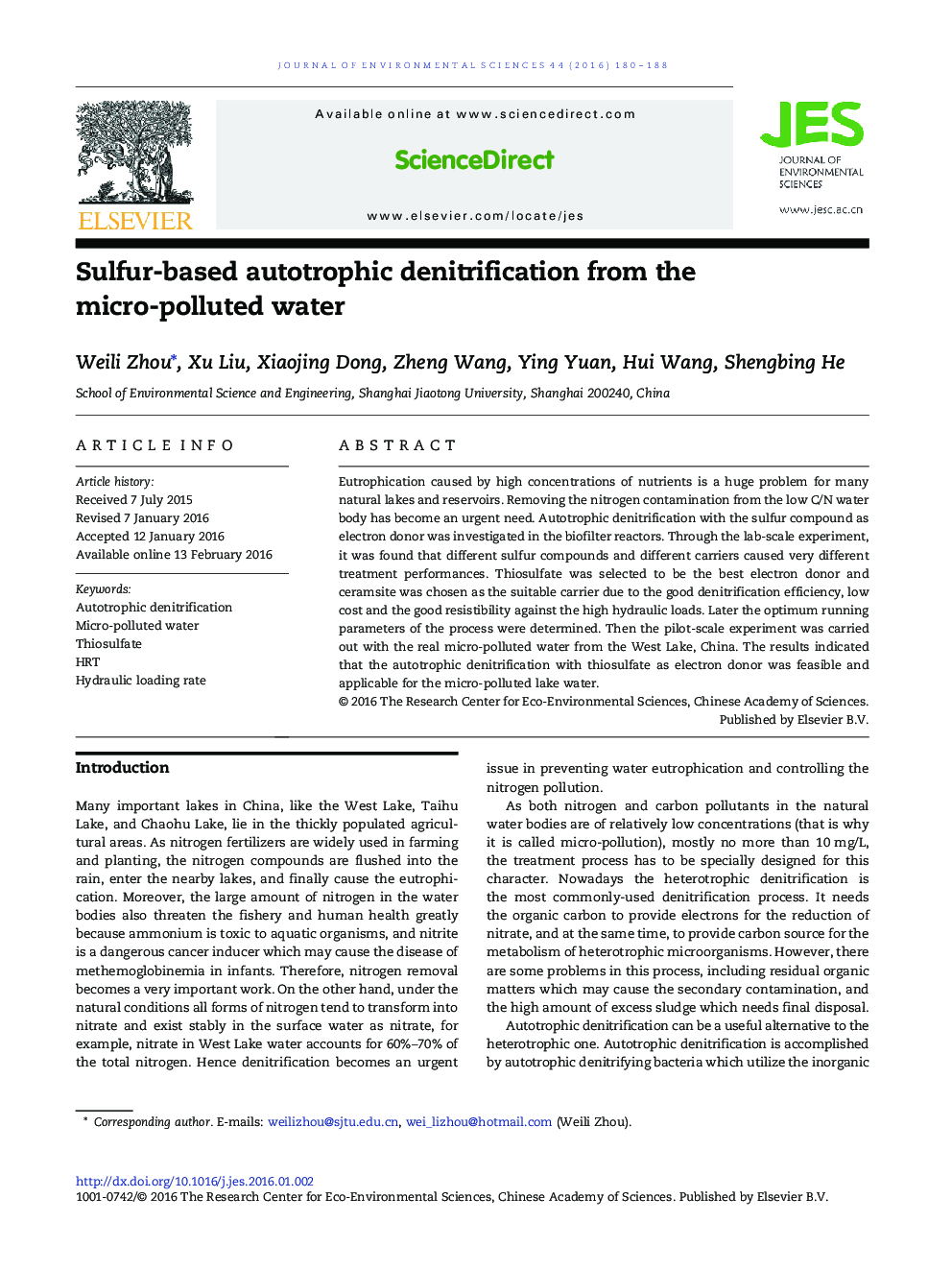| Article ID | Journal | Published Year | Pages | File Type |
|---|---|---|---|---|
| 4453769 | Journal of Environmental Sciences | 2016 | 9 Pages |
Eutrophication caused by high concentrations of nutrients is a huge problem for many natural lakes and reservoirs. Removing the nitrogen contamination from the low C/N water body has become an urgent need. Autotrophic denitrification with the sulfur compound as electron donor was investigated in the biofilter reactors. Through the lab-scale experiment, it was found that different sulfur compounds and different carriers caused very different treatment performances. Thiosulfate was selected to be the best electron donor and ceramsite was chosen as the suitable carrier due to the good denitrification efficiency, low cost and the good resistibility against the high hydraulic loads. Later the optimum running parameters of the process were determined. Then the pilot-scale experiment was carried out with the real micro-polluted water from the West Lake, China. The results indicated that the autotrophic denitrification with thiosulfate as electron donor was feasible and applicable for the micro-polluted lake water.
Graphical abstractAutotrophic denitrification with thiosulfate as electron donor was efficient. The nitrate removal remained stable at about 90%, even at the HRT of 10 min and the HLR of 6.0 m3/m2·h.Figure optionsDownload full-size imageDownload as PowerPoint slide
